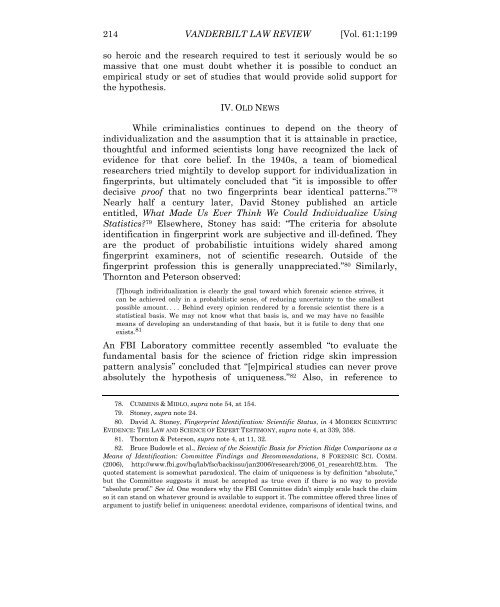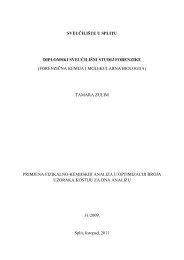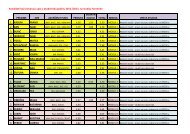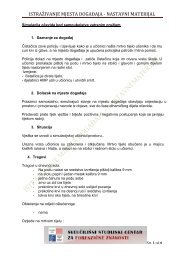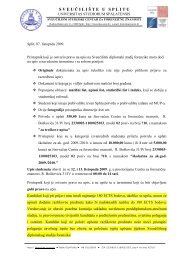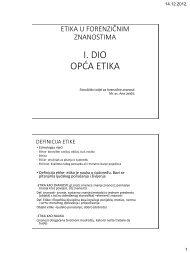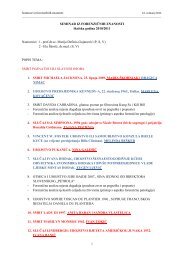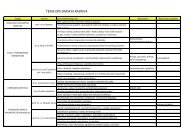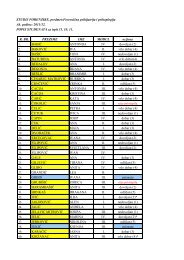The Individualization Fallacy in Forensic Science Evidence
The Individualization Fallacy in Forensic Science Evidence
The Individualization Fallacy in Forensic Science Evidence
Create successful ePaper yourself
Turn your PDF publications into a flip-book with our unique Google optimized e-Paper software.
214 VANDERBILT LAW REVIEW [Vol. 61:1:199so heroic and the research required to test it seriously would be somassive that one must doubt whether it is possible to conduct anempirical study or set of studies that would provide solid support forthe hypothesis.IV. OLD NEWSWhile crim<strong>in</strong>alistics cont<strong>in</strong>ues to depend on the theory of<strong>in</strong>dividualization and the assumption that it is atta<strong>in</strong>able <strong>in</strong> practice,thoughtful and <strong>in</strong>formed scientists long have recognized the lack ofevidence for that core belief. In the 1940s, a team of biomedicalresearchers tried mightily to develop support for <strong>in</strong>dividualization <strong>in</strong>f<strong>in</strong>gerpr<strong>in</strong>ts, but ultimately concluded that “it is impossible to offerdecisive proof that no two f<strong>in</strong>gerpr<strong>in</strong>ts bear identical patterns.” 78Nearly half a century later, David Stoney published an articleentitled, What Made Us Ever Th<strong>in</strong>k We Could Individualize Us<strong>in</strong>gStatistics? 79 Elsewhere, Stoney has said: “<strong>The</strong> criteria for absoluteidentification <strong>in</strong> f<strong>in</strong>gerpr<strong>in</strong>t work are subjective and ill-def<strong>in</strong>ed. <strong>The</strong>yare the product of probabilistic <strong>in</strong>tuitions widely shared amongf<strong>in</strong>gerpr<strong>in</strong>t exam<strong>in</strong>ers, not of scientific research. Outside of thef<strong>in</strong>gerpr<strong>in</strong>t profession this is generally unappreciated.” 80 Similarly,Thornton and Peterson observed:[T]hough <strong>in</strong>dividualization is clearly the goal toward which forensic science strives, itcan be achieved only <strong>in</strong> a probabilistic sense, of reduc<strong>in</strong>g uncerta<strong>in</strong>ty to the smallestpossible amount. . . . Beh<strong>in</strong>d every op<strong>in</strong>ion rendered by a forensic scientist there is astatistical basis. We may not know what that basis is, and we may have no feasiblemeans of develop<strong>in</strong>g an understand<strong>in</strong>g of that basis, but it is futile to deny that oneexists. 81An FBI Laboratory committee recently assembled “to evaluate thefundamental basis for the science of friction ridge sk<strong>in</strong> impressionpattern analysis” concluded that “[e]mpirical studies can never proveabsolutely the hypothesis of uniqueness.” 82 Also, <strong>in</strong> reference to78. CUMMINS & MIDLO, supra note 54, at 154.79. Stoney, supra note 24.80. David A. Stoney, F<strong>in</strong>gerpr<strong>in</strong>t Identification: Scientific Status, <strong>in</strong> 4 MODERN SCIENTIFICEVIDENCE: THE LAW AND SCIENCE OF EXPERT TESTIMONY, supra note 4, at 339, 358.81. Thornton & Peterson, supra note 4, at 11, 32.82. Bruce Budowle et al., Review of the Scientific Basis for Friction Ridge Comparisons as aMeans of Identification: Committee F<strong>in</strong>d<strong>in</strong>gs and Recommendations, 8 FORENSIC SCI. COMM.(2006), http://www.fbi.gov/hq/lab/fsc/backissu/jan2006/research/2006_01_research02.htm. <strong>The</strong>quoted statement is somewhat paradoxical. <strong>The</strong> claim of uniqueness is by def<strong>in</strong>ition “absolute,”but the Committee suggests it must be accepted as true even if there is no way to provide“absolute proof.” See id. One wonders why the FBI Committee didn’t simply scale back the claimso it can stand on whatever ground is available to support it. <strong>The</strong> committee offered three l<strong>in</strong>es ofargument to justify belief <strong>in</strong> uniqueness: anecdotal evidence, comparisons of identical tw<strong>in</strong>s, and


